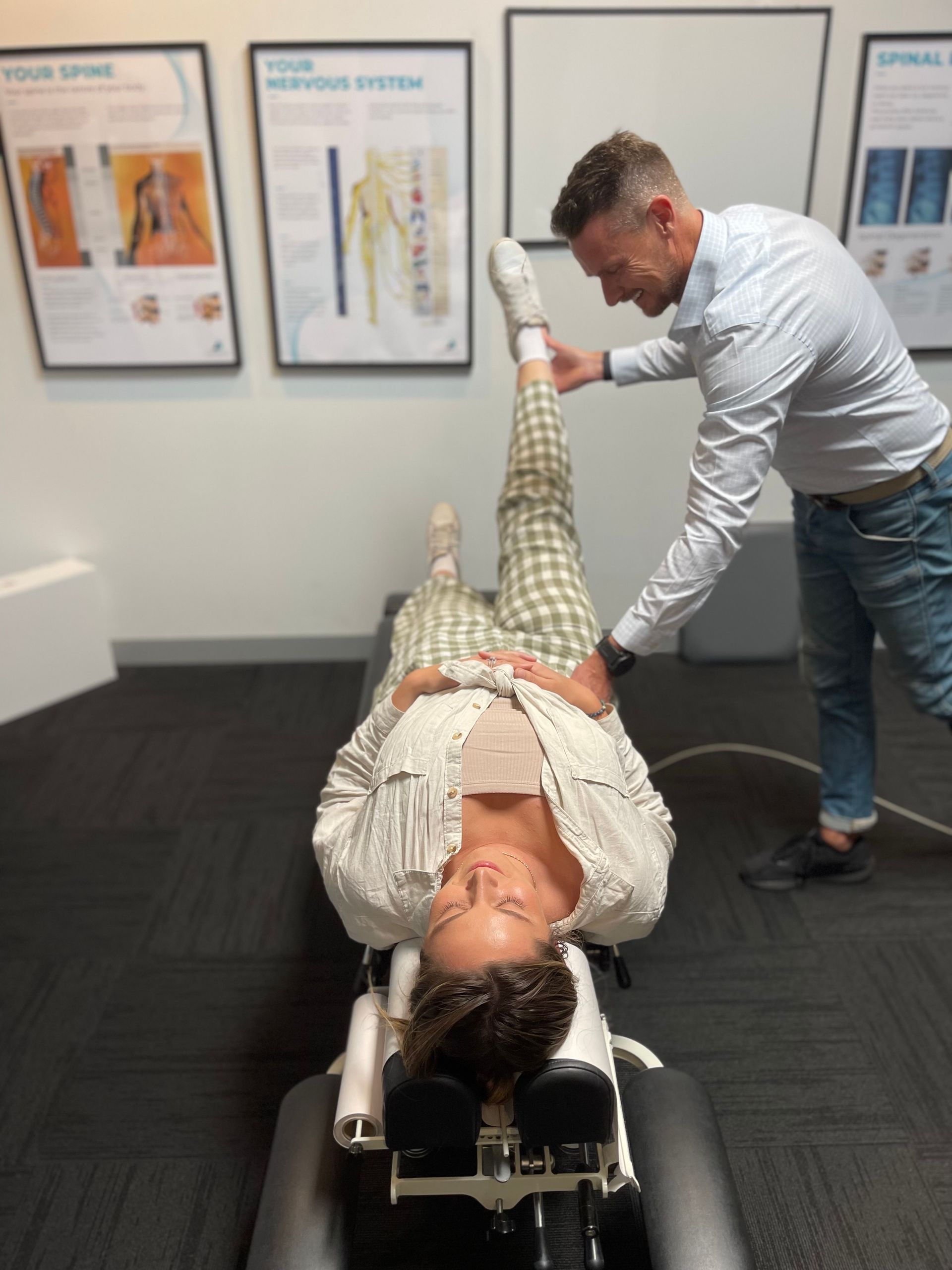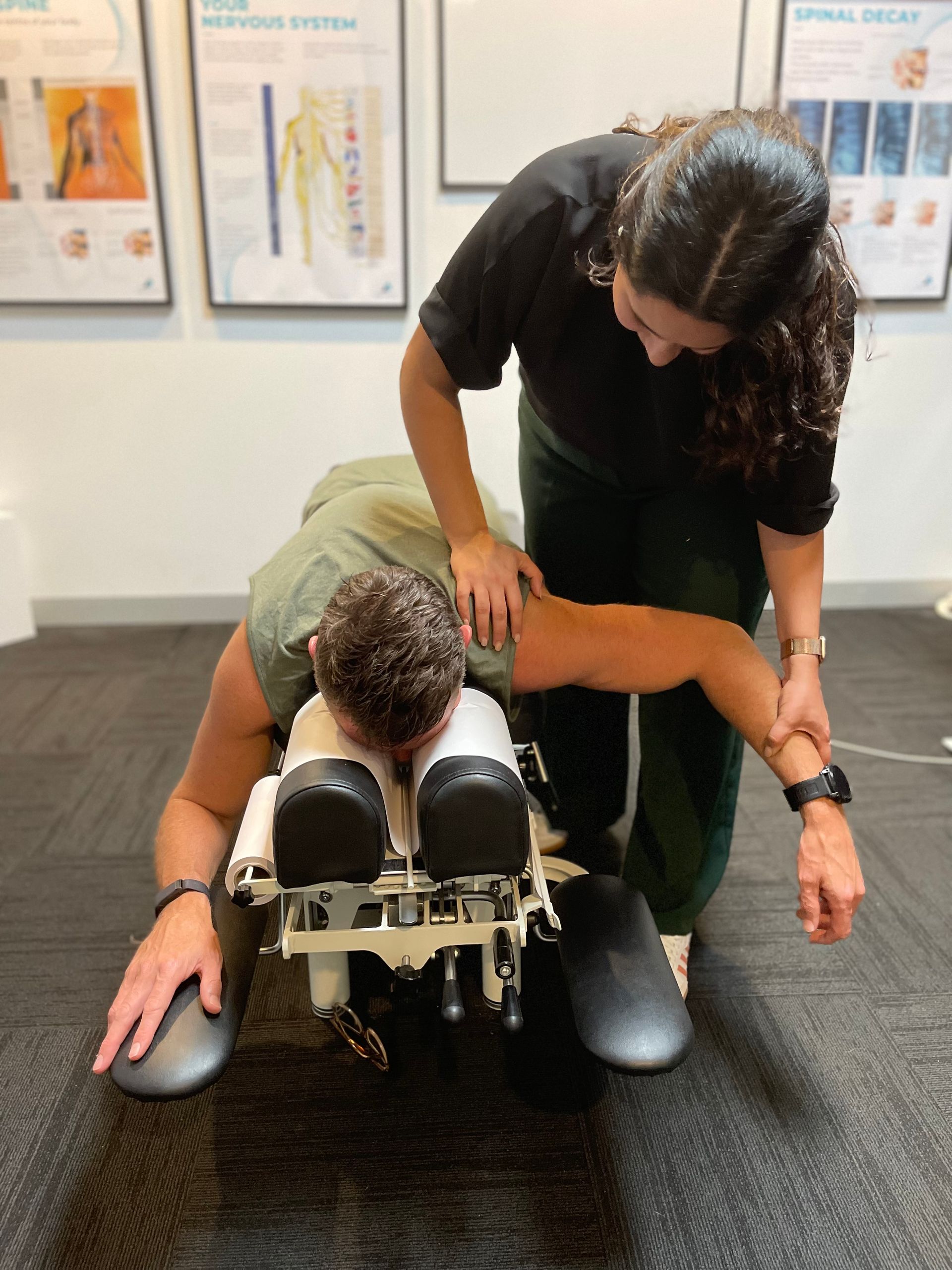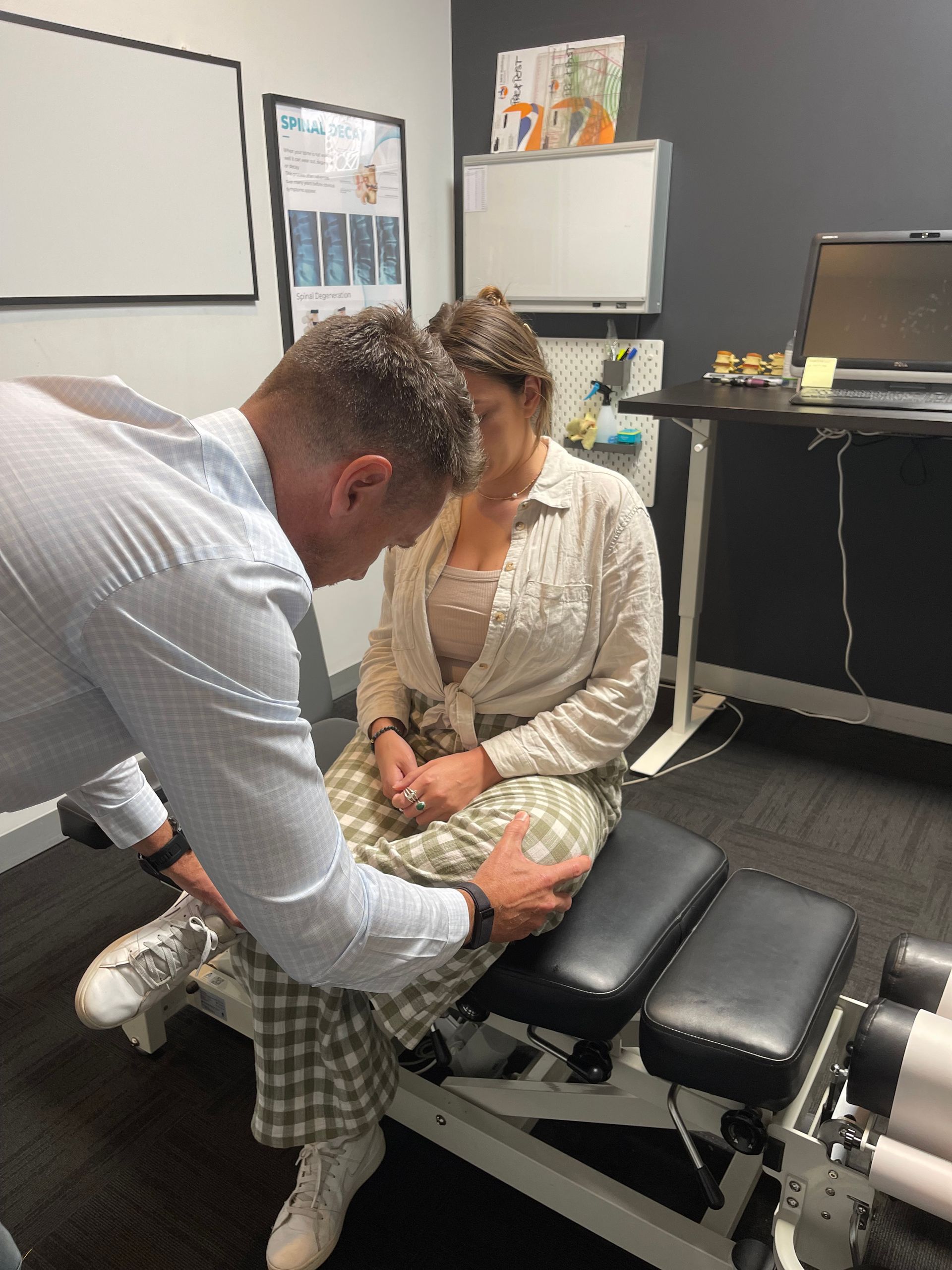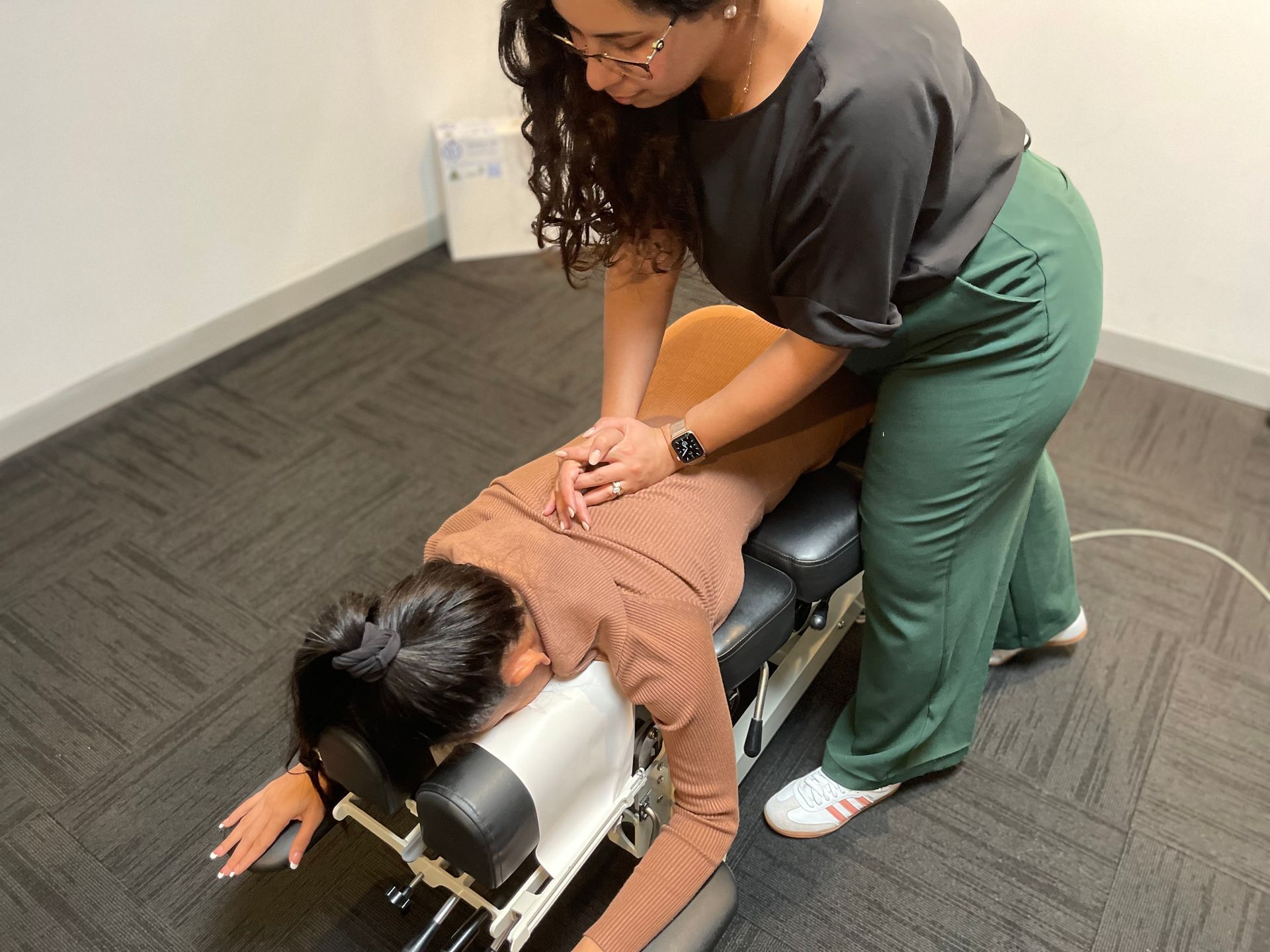What Is The Difference Between A Physiotherapist And A Chiropractor
I often wonder what is the difference between a physiotherapist and a chiropractor because I'm always looking for new health solutions. These two professions seem to offer similar services, but I wanted to learn about their differences and choose the best one for me. Both chiropractic and physiotherapy improve musculoskeletal health and reduce pain, but in different ways.
Physiotherapists use exercises, manual therapy, and other methods to restore mobility, strength, and function. However, chiropractors use spinal adjustments or manipulations to correct spine misalignments that cause pain or affect bodily function.
This article will dig deeper into physiotherapist and chiropractor techniques, discuss their different injury treatment methods, and discuss how they can work together in complementary ways to help you decide if physiotherapy or chiropractic care is right for you.
Understanding these differences allows us to innovate for optimal health and find the best approach for us.
Difference Between Physiotherapy And Chiropractic Care
Physiotherapists use exercises and manual techniques to restore mobility and strength and relieve back pain.
Physiotherapy treats musculoskeletal injuries, neurological disorders, and respiratory issues using evidence-based methods. Physiotherapy treats pain and dysfunction holistically, unlike chiropractic care, which focuses on spinal manipulation. Physiotherapists use exercise, manual therapy, and electrotherapy to improve physical function and promote long-term healing.
The treatment philosophy distinguishes physiotherapy from chiropractic care. Physiotherapists consider lifestyle, muscle imbalances, postural habits, and previous injuries when treating patients. Their assessment takes into account lifestyle, muscle imbalances, postural habits, and past injuries. This thorough assessment lets them create customized treatment plans that treat symptoms and prevent recurrences.
Education requirements for each profession also differ. University-level physiotherapy programs teach anatomy, physiology, biomechanics, pathology, and therapeutic techniques. They can evaluate movement patterns and develop scientific rehabilitation plans. However, chiropractors earn a Doctor of Chiropractic degree and specialize in manual spinal manipulation.
Physiotherapists and chiropractors treat and study differently. Physiotherapy uses evidence-based practices like exercise therapy and manual techniques to treat the whole person. Instead, chiropractic care emphasizes spinal adjustments and the idea that spine misalignments can affect health.
Understanding these differences can help people choose the best healthcare for their needs.
Physiotherapist Vs Chiropractor

Physiotherapists focus on rehabilitation exercises and manual therapy, while chiropractors adjust and manipulate the spine.
Some key differences between physiotherapy and chiropractic include:
- Approach: Physiotherapists take a holistic approach to treating patients, considering their overall health and well-being. They use various techniques such as massage, stretching, ultrasound, and electrical stimulation to promote healing and improve mobility. Chiropractors, on the other hand, believe that misalignments in the spine can cause health issues throughout the body. Their main focus is on realigning the spine through adjustments or manipulations.
- Education and Training: Physiotherapists undergo rigorous academic training and must earn a bachelor's or master's degree in physiotherapy. They also complete clinical placements to gain hands-on experience. Chiropractors also require a bachelor's degree before entering a chiropractic program which typically takes four years to complete. During their education, they learn specialized techniques for manipulating the spine.
- Treatment Scope: Physiotherapists treat a wide range of conditions including musculoskeletal injuries, neurological disorders, respiratory problems, and cardiovascular conditions. They work with patients of all ages from infants to seniors. Chiropractors mainly focus on musculoskeletal issues such as back pain, neck pain, headaches, and joint problems.
- Philosophy: Physiotherapy emphasizes evidence-based practice and aims to restore function and reduce pain through exercise prescription and therapeutic modalities. It focuses on empowering patients to take an active role in their own recovery.
Chiropractic care is based on the belief that proper alignment of the spine promotes overall wellness by allowing the body's innate ability to heal itself.
Physiotherapists use rehabilitation exercises and manual therapy to help patients recover from injury or surgery. Chiropractors treat musculoskeletal issues with spinal adjustments and manipulation. Understanding these differences can help people choose the best approach for their needs.
Physiotherapy Techniques
Explore the many effective physiotherapy techniques that can help you regain strength, mobility, and healing without spinal manipulations. I treat pain and dysfunction with a variety of physiotherapeutic techniques.
Therapeutic exercises strengthen muscles, increase flexibility, and improve function. Therapists can tailor therapy to each person's needs and adjust it as needed.
Physiotherapists use manual therapy. This hands-on method includes joint mobilizations, soft tissue massage, and stretching. To reduce pain, increase range of motion, and correct alignment, I apply pressure and gentle movements to specific areas. Combining manual therapy with other treatments provides comprehensive care.
Physiotherapists use ultrasound, electrical stimulation, heat, and cold therapy. These therapies can reduce inflammation, pain, tissue healing, and circulation. Non-invasive methods complement other physiotherapy techniques and help create an effective treatment plan.
Finally, education is crucial to physiotherapy. As a physiotherapist, I believe in educating my patients about their injuries and conditions. Understanding the causes of their symptoms and learning self-management strategies like correct posture or body mechanics during daily activities or exercise can help people recover.
Chiropractic Treatments

Chiropractic treatments are holistic, restoring your body's balance and relieving musculoskeletal issues without surgery or medication. Chiropractors diagnose, treat, and prevent musculoskeletal disorders, particularly spine disorders. Chiropractors utilize spinal adjustments, joint manipulations, and soft tissue therapies in the treatment of musculoskeletal disorders, particularly spine disorders.
The treatment methods of chiropractors and physiotherapists differ. Both professions aim to improve physical function and relieve pain, but chiropractors use hands-on techniques to realign the spine and other joints. This manual therapy may improve nervous system function and well-being.
Chiropractic treatments often teach lifestyle changes that improve long-term health. We may recommend exercise, diet, posture correction, stress reduction, and ergonomic adjustments to daily activities. Chiropractors treat both symptoms and dysfunction by addressing these factors and using manual therapy.
This leads to the next section on 'physiotherapy for injury,' which differs from chiropractic treatments in that physiotherapists use a wider range of techniques for rehabilitation. After an injury or illness, physiotherapy uses exercises, stretches, electrotherapy modalities like ultrasound or electrical stimulation, and self-management education to restore movement and function.
Physiotherapy For Injury
Physical therapy uses many methods to restore movement and function after an injury or illness. Physiotherapists use various methods to help patients recover from injuries. Exercises, manual therapy, electrotherapy, and hydrotherapy are examples. We want to reduce pain, increase strength and flexibility, and aid the body's healing.
The way physiotherapists and chiropractors treat injuries differs. Physiotherapy treats the injury's root causes to improve physical health. We collaborate with patients to create customized treatment plans that address their specific needs. This holistic approach treats symptoms and prevents future injuries through education and lifestyle changes.
Physiotherapists may use ultrasound or laser therapy in addition to hands-on therapy. These novel methods increase blood flow and reduce tissue inflammation to speed healing. We stay current on technology and research to provide cutting-edge care that maximizes patient results.
Chiropractic Care For Injury

Chiropractic adjustments and manipulations realign the body's structures, promoting healing and relieving injury pain. As a chiropractor, I detect spine misalignments, or subluxations, caused by trauma or repetitive stress. I align and improve nervous system function by applying targeted pressure to these areas. This reduces pain and boosts the body's healing.
Chiropractors focus on the spine and musculoskeletal system, unlike physiotherapists. Spinal misalignments may affect nerve function and health. However, physiotherapists treat a variety of muscle, joint, and soft tissue conditions using exercises, manual therapy, and other modalities.
Chiropractic care for injuries usually involves several adjustments to correct misalignments and restore function. Adjustments are usually gentle and non-invasive. Chiropractors may use stretching, massage, and electrical stimulation in addition to spinal manipulation to promote healing.
Chiropractic care treats immediate symptoms and prevents future injuries and chronic conditions by making personalized adjustments. After an injury, regular chiropractic visits can improve mobility and reduce pain.
Physiotherapy Benefits
Imagine the relief and joy you'll feel as physiotherapy restores strength, flexibility, and independence after an injury. Physiotherapists diagnose and treat many musculoskeletal conditions. They use personalized treatment plans to improve your physical function and quality of life.
Key physiotherapy benefits:
- Enhanced Recovery: Physiotherapy techniques such as therapeutic exercises, manual therapy, and electrotherapy can help accelerate your recovery process. By targeting specific areas of weakness or dysfunction, physiotherapists can assist in rebuilding strength and restoring mobility.
- Pain Management: Whether it's acute or chronic pain resulting from an injury or condition, physiotherapists have various methods to alleviate discomfort. They may use techniques like heat or cold therapy, ultrasound, or acupuncture to help reduce pain levels and promote healing. Did you know? Physiotherapists often employ innovative technologies such as laser therapy or virtual reality rehabilitation to enhance treatment outcomes.
- Prevention of Future Injuries: One crucial aspect of physiotherapy is identifying potential risk factors for future injuries. By addressing muscle imbalances, poor posture habits, or faulty movement patterns during your sessions with a physiotherapist, you can significantly reduce the likelihood of re-injury in the long term.
- Stay ahead: Physiotherapists stay up-to-date with the latest research and advancements in their field to provide contextually relevant strategies for injury prevention.
Physiotherapy has benefits beyond injury recovery. It empowers people by giving them the tools and knowledge they need to manage their health. In the next section, we'll discuss chiropractic benefits, but both physiotherapy and chiropractic care help people achieve optimal physical well-being without invasive procedures or medication.
Chiropractic Benefits

Chiropractic care addresses musculoskeletal issues holistically and improves health. As a chiropractor, I focus on the spine-nervous system relationship because misalignment can cause health issues. Through spinal manipulation, I aim to restore spine alignment and function to relieve pain and promote healing.
Drug-free pain relief is a major benefit of chiropractic care. Chiropractors like me use hands-on manipulation to treat the cause rather than mask symptoms with medication. I help patients diagnose and treat back, neck, and headache issues. We relieve immediate pain and prevent future injuries by doing so.
Chiropractic care relieves pain and improves health. Restoring spinal alignment improves body-wide nerve function. This improved brain-organ communication improves body coordination and function. After chiropractic treatment, many patients report increased energy and better sleep.
Chiropractic takes a proactive approach to musculoskeletal health. Regular adjustments keep the spine aligned and reduce joint and muscle stress during physical activity and repetitive tasks, preventing injuries. This prevention is especially useful for athletes and physically active workers.
Physiotherapy Techniques And Methods
Imagine doing exercises and movements to improve mobility and strength to understand physiotherapy. Physiotherapists are experts at treating musculoskeletal injuries, neurological disorders, and respiratory issues with these techniques.
Physiotherapy emphasizes exercise, unlike chiropractic care, which manipulates the spine. Physiotherapists use various methods to help patients recover and reduce pain. Physiotherapists reduce stiffness and increase flexibility by manipulating joints and soft tissues through manual therapy. You may need customized mobilization or stretching exercises.
Physiotherapists use electrotherapy to stimulate nerves or muscles for pain relief or muscle retraining. In addition to these methods, physiotherapists use specialized equipment. They may use ultrasound machines to heat tissues deep down, promoting blood flow and healing. To relieve compressed nerves or joints, they may use traction devices to gently stretch the spine or limbs.
Using these methods, physiotherapists aim to improve movement patterns and treat the cause of your condition. They develop personalized exercise programs and teach injury prevention strategies with you.
Chiropractic Techniques And Methods

One fascinating aspect of chiropractic care is the variety of techniques and methods used to treat spinal issues and promote wellness.
Chiropractic manipulation, which improves mobility and alignment by applying controlled force to joints, is their specialty. Chiropractic adjustment reduces pain and inflammation and improves nervous system function.
Besides manual manipulation, chiropractors may use mobilization, soft tissue therapy, and therapeutic exercises. Chiropractic care focuses on spinal health, while physiotherapy treats a wider range of musculoskeletal conditions. Chiropractors believe spine misalignments can hinder the body's natural healing and cause health issues.
Chiropractors use their hands or specialized instruments to carefully adjust these subluxations. These adjustments aim to restore joint function and eliminate nervous system interference.
Lifestyle factors can affect spinal health, so chiropractic care takes a holistic approach to wellness. Chiropractic care often includes posture correction, ergonomics, exercise, nutrition, and stress management.
Chiropractors aim to improve long-term health by addressing these factors and using effective spinal manipulation techniques. Chiropractic care uses manual techniques to improve spinal health and wellness. Chiropractors use manipulation, mobilization, and soft tissue therapy to correct spine subluxations that cause pain or impair function.
Chiropractic care focuses on spinal alignment, unlike physiotherapy, which treats musculoskeletal conditions.
Physiotherapy Vs Chiropractic: Which Is Right For You
Choosing the right therapy can be difficult, but understanding what is the difference between a physiotherapist and a chiropractor can help.
Physiotherapy improves mobility, function, and quality of life through exercises, manual therapy, and education. Highly-trained physiotherapists assess and treat a variety of musculoskeletal conditions using evidence-based methods.
However, chiropractic care promotes health through the spine-nervous system relationship. Spinal adjustments or manipulation are how chiropractors relieve pain and improve function. They believe spine misalignments hinder the body's healing, causing health problems.
Consider your needs when choosing between physiotherapy and chiropractic care. Physiotherapy treats both symptoms and causes, making it a better choice for sports injuries and post-surgical rehabilitation. Physiotherapists collaborate with patients to create individualized treatment plans.
Chronic back or neck pain or spinal health prevention may benefit from chiropractic care. Targeted adjustments by chiropractors relieve pain and align the spine. Regular maintenance visits are often part of their treatment plans to prevent future issues.
Both physiotherapy and chiropractic care treat musculoskeletal conditions differently. Consider your treatment goals and needs. Consult a physiotherapist and chiropractor to determine the best treatment for you.
How Physiotherapists And Chiropractors Work Together

After discussing the differences between physiotherapists and chiropractors, let's discuss their collaboration.
Despite their different treatment methods, physiotherapists and chiropractors often work together to provide the best care.
Multidisciplinary collaboration between physiotherapists and chiropractors is possible. This means they use their expertise and knowledge to create a comprehensive patient treatment plan. Together, they can solve more problems and provide better solutions. Physiotherapists and chiropractors can collaborate in these ways:
- Coordinating treatments: Physiotherapists and chiropractors can coordinate their treatments to ensure that they complement each other. For example, while a chiropractor may focus on adjusting the spine, a physiotherapist may incorporate exercises and stretches to strengthen the surrounding muscles.
- Sharing patient information: Communication is key when it comes to collaborating between healthcare professionals. Physiotherapists and chiropractors can share important patient information such as medical history, diagnosis, and progress reports. This allows them to have a holistic understanding of the patient's condition and tailor their treatments accordingly.
- Referring patients: In some cases, physiotherapists may refer patients to chiropractors or vice versa if they believe that the other professional's expertise could benefit the patient. By referring patients, they ensure that individuals receive the most appropriate care for their specific needs.
- Collaborative consultations: Physiotherapists and chiropractors may also hold joint consultations with patients where both professionals are present. This allows them to discuss treatment options together, answer any questions or concerns from the patient, and develop a cohesive plan moving forward.
Collaborative consultations: Physiotherapists and chiropractors can consult with patients together. This lets them discuss treatment options, answer patient questions, and create a plan.
Physiotherapists and chiropractors can provide integrated healthcare that meets each patient's needs by working together. This collaboration can improve treatment outcomes for patients.
Complementary Approaches: Physiotherapy And Chiropractic
Let's discuss how physiotherapy and chiropractic can work together to meet your needs and improve your treatment. Both approaches emphasize movement and function, but they use different methods.
Physiotherapy uses exercises, manual therapy, and education to improve mobility and reduce pain. However, chiropractic care emphasizes spinal manipulation to restore alignment and nerve function. These complementary methods can create a comprehensive treatment plan that addresses both your muscular and skeletal issues.
Physiotherapy effectively treats musculoskeletal conditions by targeting the root causes of pain or dysfunction. Using personalized exercise programs and hands-on techniques like joint mobilization and soft tissue release, physiotherapists improve movement patterns and strengthen weak muscles. This method reduces pain, improves function, and prevents injuries.
Chiropractic adjustments, especially for spinal issues, may improve nerve communication and joint mobility. However, chiropractic care emphasizes spinal manipulation to treat health issues beyond musculoskeletal issues. Chiropractors use precise force to adjust misaligned vertebrae for pain relief and nervous system function. These adjustments can improve posture, range of motion, headaches, digestion, and sleep.
Due to improved blood circulation, physiotherapy techniques like therapeutic exercises or ultrasound therapy for muscle relaxation or inflammation reduction can speed healing.
Considering physiotherapy and chiropractic as complementary treatments allows for more comprehensive care that addresses all aspects of your condition, from symptoms to causes. Combining spinal manipulation and physiotherapy exercises provides a customized approach that provides immediate relief and long-term improvement. This integration of techniques empowers you to actively participate in your healing, improving outcomes, and speeding up recovery.
Choosing Between Physiotherapy And Chiropractic

Consider your goals and preferences when choosing a treatment for your needs.
Chiropractic and physiotherapy both aim to improve patients' health, but their methods differ. Physiotherapists use exercises, stretches, and manual therapy to restore function and mobility. They treat musculoskeletal, neurological, and respiratory conditions. However, chiropractors treat spine, joint, and nervous system conditions with spinal adjustments.
Physiotherapy uses a holistic approach and customized treatment plans for each patient. It encourages patients to exercise and change their lifestyle. Physiotherapists use massage and joint mobilization to relieve pain and restore movement. They also teach patients self-management skills to continue their progress at home.
Chiropractic care emphasizes spinal adjustments to improve alignment and relieve nerve pressure. Spinal misalignments can cause many health problems, say chiropractors. They gently adjust these misalignments to restore function and relieve pain.
It's important to consider your condition or injury and treatment preferences when choosing between physiotherapy and chiropractic. Physiotherapy may be best if you want to participate in your recovery or have more than just spine-related issues. If you have spinal alignment or nerve impingement issues, chiropractic care may be better.
Physiotherapy and chiropractic treat many conditions. Chiropractic care relieves pain through spinal adjustments, while physiotherapy restores function through exercises and manual therapy. Understanding the differences between these two approaches and considering your goals and preferences can help you choose a treatment. Both professionals are highly trained and committed to patient health and well-being.
Final Thoughts
In conclusion, physiotherapists and chiropractors treat patients differently.
Injured people receive physiotherapy to improve mobility, strength, and pain. However, chiropractic care focuses on spine adjustments and musculoskeletal system manipulation to treat misalignments and nerve interference.
Which method is best for you depends on your needs and preferences. For a comprehensive treatment plan that includes exercise, manual therapy, and self-management education, physiotherapy may be better. If you prefer hands-on spinal adjustments and think spine misalignments are causing health issues, chiropractic care may help.
Physiotherapists and chiropractors can collaborate when their skills complement each other. This collaborative approach can give patients a comprehensive treatment plan for musculoskeletal and functional issues.
Choose between physiotherapy and chiropractic care by consulting with professionals from both fields who can assess your condition and recommend the best treatment. Communicate with your doctors to find the best treatment for you. Now you know what is the difference between a physiotherapist and a chiropractor.
Frequently Asked Questions
What Are The Educational Requirements To Become A Physiotherapist Or A Chiropractor?
Physiotherapists and chiropractors have different educational requirements.
A four-year bachelor's degree in physiotherapy was required for me to practice. I learned anatomy, physiology, biomechanics, and rehabilitation. Several clinical placements under experienced professionals gave me practical experience.
However, I had to complete a four-year Doctor of Chiropractic program to become a chiropractor. This program covered chiropractic anatomy, physiology, diagnosis, and treatment. Both paths require dedication and a genuine desire to improve health through non-invasive methods.
Are Physiotherapy And Chiropractic Treatments Covered By Insurance?
Insurance companies often cover chiropractic and physiotherapy. Insurance companies recognize these alternative healthcare methods' value and know they can treat musculoskeletal conditions.
I'm glad insurance is supporting these treatments because I've always loved trying new things to get healthier. I appreciate my insurance company's support for physiotherapy and chiropractic care.
Insurance coverage for injury recovery and chronic pain management gives me peace of mind that I can get the care I need without worrying about cost.
Can Chiropractors Perform Surgery Or Prescribe Medication?
Chiropractors cannot operate or prescribe drugs. Chiropractors diagnose and treat musculoskeletal conditions, especially spine issues. Chiropractors manually manipulate joints to relieve pain, improve function, and boost well-being.
Physiotherapists help patients regain mobility and strength after an injury or illness. Exercise therapy, massage, and electrotherapy help them recover from physical impairments.
Both professions are vital to healthcare, but their scope of practice differs when it comes to surgery and medication.
Are There Any Potential Risks Or Side Effects Associated With Physiotherapy Or Chiropractic Care?
Both physiotherapy and chiropractic care have risks and side effects. Physiotherapy often causes muscle soreness or stiffness after exercise or manual therapy. Exercises done incorrectly or with excessive force by the therapist can also result in injury.
Chiropractic care may cause headaches, fatigue, or pain after an adjustment. Spinal manipulation can occasionally cause herniated discs or strokes. These risks are low, and most people benefit from physiotherapy and chiropractic care when done by professionals.
Discuss any concerns or risks with your doctor before starting treatment.
How Long Does It Typically Take To See Results From Physiotherapy Or Chiropractic Treatments?
The time it takes for physiotherapy or chiropractic treatments to work depends on the patient's condition, severity, and commitment to the treatment plan.
As a healthcare innovator, I know waiting for results is frustrating. Remember that physiotherapy and chiropractic care promote healing and function in different ways.
Physiotherapy uses exercises, manual therapy, and modalities to improve mobility and reduce pain. However, chiropractic care emphasizes spinal adjustments to improve nervous system function and reduce pain. Some people feel relief immediately after a session, while others need multiple sessions over weeks or months to see results. Realistic expectations and open communication with your doctor about your progress help them adjust the treatment plan.
Innovation requires patience and trust in these professionals who want to improve your health.
Latest Articles
Mornington Peninsula
Chiropractic
Just up the road from you...
- Mon - Fri
- -
- Sat - Sun
- Appointment Only
Mornington
03 9787 8518
Rosebud
03 5911 8181
CONDITIONS
LINKS
Our Locations
Designed By Jon Web Design



